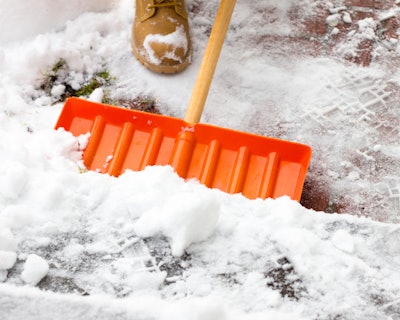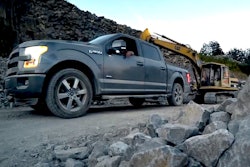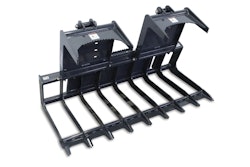
Snow shoveling may seem like an everyday chore, but it can lead to a number of health risks including back injuries and heart attacks. A study found that 1,600 people died of heart attacks related to snow removal from 1990 to 2006, while thousands more were injured.
According to Gary Smith, director of the Center for Injury Research and Policy of the Research Institute at Nationwide Children’s Hospital in Ohio, the cold weather increases the likelihood of heart attacks.
Cold weather increases your heart rate and blood pressure. It can also cause blood to clot more easily and constrict arteries. While older and inactive individuals are more at risk, even healthy individuals can fall victim to the strain. Below are some tips for crew members to stay safe while clearing sidewalks and driveways with a shovel.
Limber up
Snow shoveling is exercise, so just like before a work out you should warm up your muscles before getting started. Do some light exercise or stretching for 10 minutes before shoveling to prevent injury and fatigue. Cold, tight muscles are far more likely to sprain or strain.
Wear layers
Light, layered water-proof clothing provides insulation that is breathable. By wearing layers you can take off one as you warm up during your work. Avoid wearing heavy wools, manmade materials or other materials that don’t allow sweat to evaporate. Cotton is a good breathable fabric.
Use the right shovel
By choosing an ergonomically-designed shovel, you can reduce the amount of bending you have to do. A plastic blade can also make the load lighter compared to a metal one. A smaller blade may not be able to move as much snow in one load but it also keeps you from picking up too heavy a pile.
The correct shovel handle length should allow you to slightly bend your knees, flex your back 10 degrees or less and can be held comfortably in your hands at the start of the “shoveling stroke.”
Push, don’t lift
The American Academy of Orthopaedic Surgeons advises pushing the snow instead of lifting. Pushing places far less strain on the spine than lifting. If you must lift the snow, use the proper shoveling technique. Squat with your legs apart, knees bent and back straight. Lift with your legs, not your back. Scoop small amounts of snow and walk it to where you want it. Do not throw it over your shoulder as this twisting motion can stress your back.
Never remove deep snow all at once. Try to shovel snow shortly after it falls when it is still light and fluffy. The longer it stays on the ground, the wetter it becomes. Wet snow is heavier and harder to move. A full shovel load can weigh as much as 25 pounds.
Take breaks
Pace yourself by taking breaks every 20 to 30 minutes of shoveling. During these breaks, be sure to stretch your limbs and drink plenty of water. SIMA says you should drink water as if you were running five miles or experiencing a tough workout at the gym.
If you feel a tightness in your chest or dizziness, stop immediately. No cleared driveway or sidewalk is ever worth your life.











